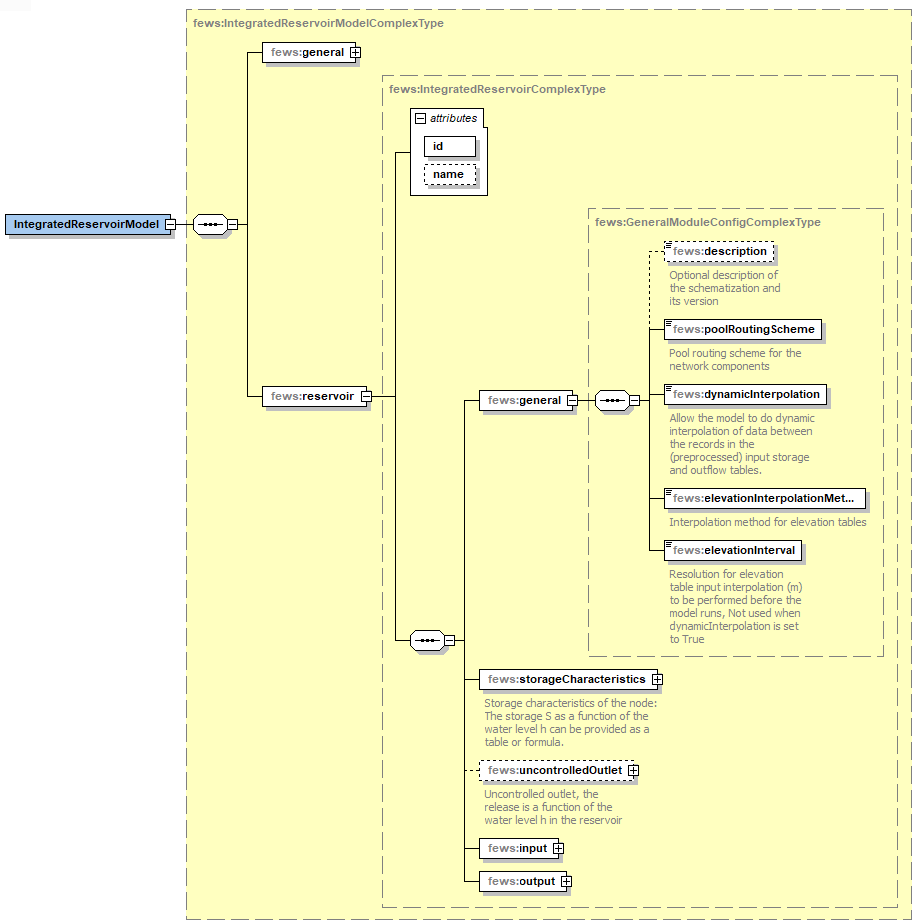...
Configuring the Integrated Reservoir Model General Adapter file
...
general
Configuring a pi-version 1.8 is required for the diagnostics of the model.
IdMapping is useful, but ofcourse dependent on how the variables have been defined in the model. The Reservoir Model code will try to parse the configured model variables (like IIn, QOut, etc) from the parameterId of the PI timeseries, the locationId is not used. This means that the parameterId's of all the input timeseries need to be unique (and identical to the model variables). When writing the output timeseries, the locationId used in the import PI xml files will be used as the locationId in the output PI xml files.
exportStateActivity
<exportStateActivity>
...
<exportTimeSeriesActivity>
<description>Export state data (levels and volumes)</description>
<exportFile>importState.xml</exportFile>
<exportDataSetActivity>
<moduleInstanceId>$CATCHMENT$_IRM_Reservoir_Forecast</moduleInstanceId>
</exportDataSetActivity>
exportRunFileActivity
The run_info file is required input for the Reservoir model.
<exportFile>run_info.xml</exportFile>
<properties>
<string key="model" value="$RESERVOIR$_IntegratedReservoirModel.xml"/>
</properties>
</exportRunFileActivity>
executeActivity
...
The model definition for the reservoir is configured in file that follows the Integrated Reservoir Model schema. The model options are described below. An example Integrated Reservoir Model file is attached.
The model can be considered "timestep ending", similar the the timestep definition of Delft-FEWS.
Schema
general
reservoir
general
interpolationMethod
...
storageCharacteristics
uncontrolled outlet
input /
...
output files
The naming convention of the input and output timeseries files are free, the model will determine which files to read for the input based on the inputTimeSeriesFile filed in the run_info file. The following two input timeseries files are suggested:
- importState.xml
...
- level values, or
...
- storage values
- import.xml
- Inflow
...
- outflow (optional)
The startDateTime and endDateTime in the run_info file are used by the model to determine the start (startDateTime) and end (endDateTime) of the model run. The model will pick the starting (state) value for level/storage (level has precedent in case of an inconsistency)
, inflow, release from the inputTimeSeriesFiles at the specific .
If a starting level value is missing, the model will use the starting storage value. If both starting level/storage cannot be determined from the input files, the model will throw an error
inflow and outflow values at the starting time are not required at the first timestep. When they are not found, a value of 0 is used.
Model specifics
No calculations/processing is performed at the first timestep (t=0, startDateTime as set in the run_info.xml file)
Model specifics
First timestep
Ensembles
Model is able to run in parallel, where a "static"
...


